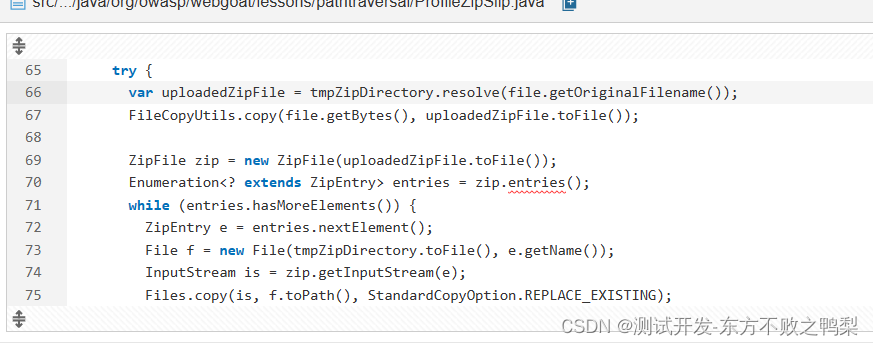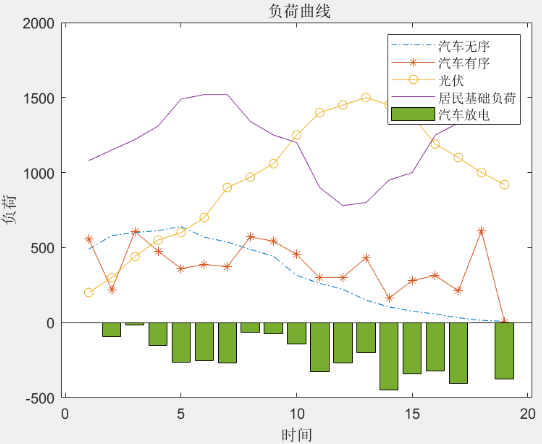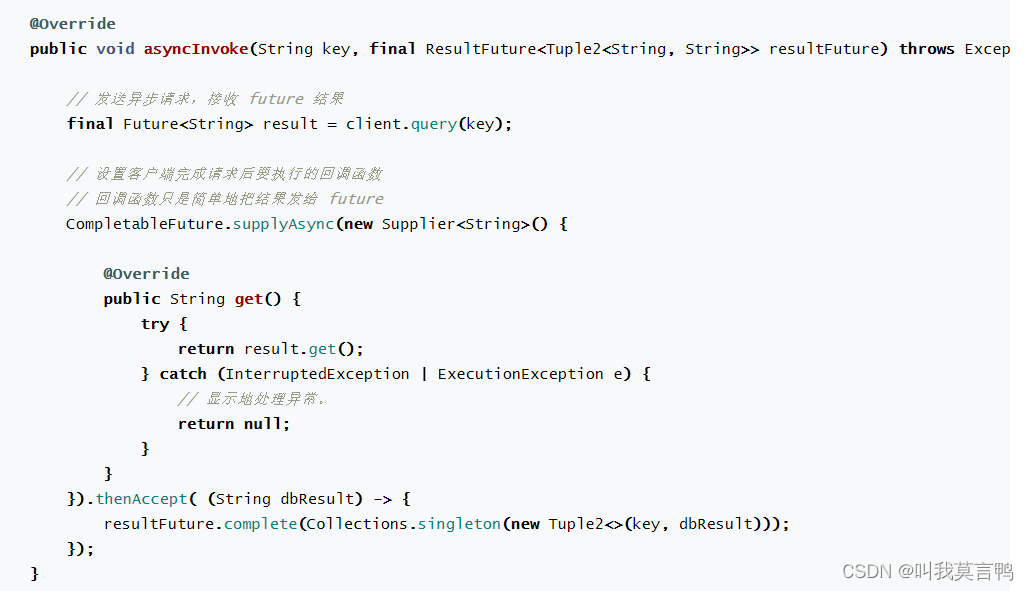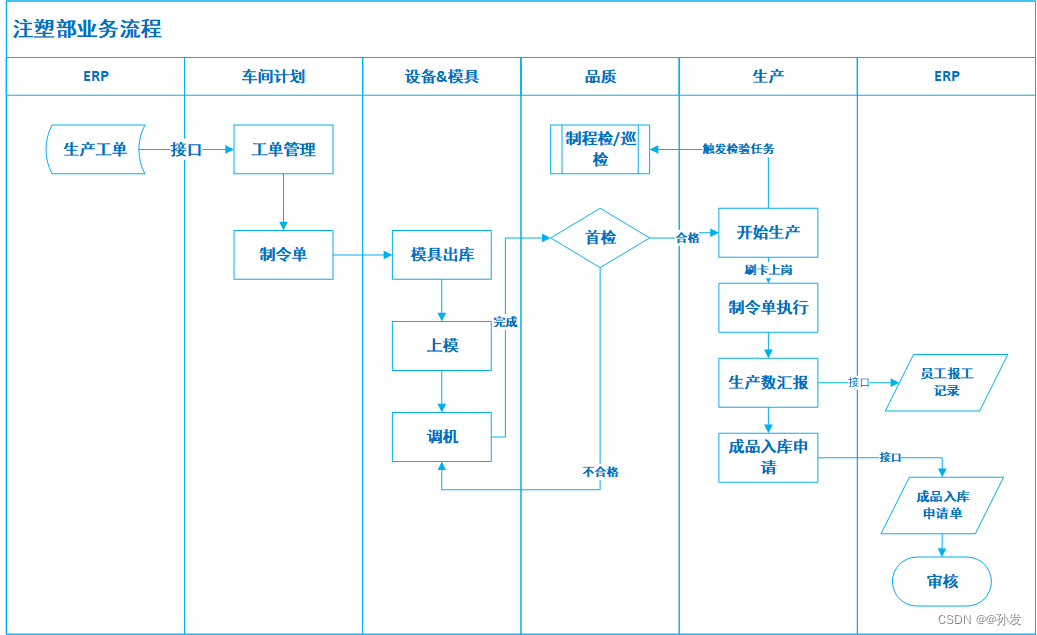
目录
- 1.题目
- 2.答案
- 3.提交结果截图
- 4.图解
链接: 串联所有单词的子串
1.题目
给定一个字符串 s 和一个字符串数组 words。 words 中所有字符串 长度相同。
s 中的 串联子串 是指一个包含 words 中所有字符串以任意顺序排列连接起来的子串。
- 例如,如果
words = ["ab","cd","ef"], 那么"abcdef","abefcd","cdabef","cdefab","efabcd", 和"efcdab"都是串联子串。"acdbef"不是串联子串,因为他不是任何words排列的连接。
返回所有串联子串在 s 中的开始索引。你可以以 任意顺序 返回答案。
示例 1:
输入:s = "barfoothefoobarman", words = ["foo","bar"]
输出:[0,9]
解释:因为 words.length == 2 同时 words[i].length == 3,连接的子字符串的长度必须为 6。
子串 "barfoo" 开始位置是 0。它是 words 中以 ["bar","foo"] 顺序排列的连接。
子串 "foobar" 开始位置是 9。它是 words 中以 ["foo","bar"] 顺序排列的连接。
输出顺序无关紧要。返回 [9,0] 也是可以的。
示例 2:
输入:s = "wordgoodgoodgoodbestword", words = ["word","good","best","word"]
输出:[]
解释:因为 words.length == 4 并且 words[i].length == 4,所以串联子串的长度必须为 16。
s 中没有子串长度为 16 并且等于 words 的任何顺序排列的连接。
所以我们返回一个空数组。
示例 3:
输入:s = "barfoofoobarthefoobarman", words = ["bar","foo","the"]
输出:[6,9,12]
解释:因为 words.length == 3 并且 words[i].length == 3,所以串联子串的长度必须为 9。
子串 "foobarthe" 开始位置是 6。它是 words 中以 ["foo","bar","the"] 顺序排列的连接。
子串 "barthefoo" 开始位置是 9。它是 words 中以 ["bar","the","foo"] 顺序排列的连接。
子串 "thefoobar" 开始位置是 12。它是 words 中以 ["the","foo","bar"] 顺序排列的连接。
提示:
1 <= s.length <= 10^41 <= words.length <= 50001 <= words[i].length <= 30words[i]和s由小写英文字母组成
2.答案
class Solution {public List<Integer> findSubstring(String s, String[] words) {List<Integer> result = new ArrayList<>();int wordLength = words[0].length();int wordCount = words.length;for (int i = 0; i < wordLength; i++) {// 超出长度if (i + wordCount * wordLength > s.length()) {break;}// 初始化窗口Map<String, Integer> map = new HashMap<>();for (int j = 0; j < wordCount; j++) {String word = s.substring(i + j * wordLength, i + (j + 1) * wordLength);map.put(word, map.getOrDefault(word, 0) + 1);}// 筛掉原单词数组for (String word : words) {map.put(word, map.getOrDefault(word, 0) - 1);if (map.get(word) == 0) {map.remove(word);}}// 滑动窗口for (int j = 0; i + j + wordCount * wordLength <= s.length(); j+=wordLength) {if (j != 0) {String addWord = s.substring(i + j + wordLength * (wordCount - 1), i + j + wordLength * wordCount);map.put(addWord, map.getOrDefault(addWord, 0) + 1);if (map.get(addWord) == 0) {map.remove(addWord);}String delWord = s.substring(i + j - wordLength, i + j);map.put(delWord, map.getOrDefault(delWord, 0) - 1);if (map.get(delWord) == 0) {map.remove(delWord);}}if (map.size() == 0) {result.add(i + j);}}}return result;}
}
3.提交结果截图

4.图解
以如下测试用例举例说明:
输入:s = "barfoothefoobarman", words = ["foo","bar"]
输出:[0,9]
首先,可以将字符串 s 按照单词长度进行划分,通过开头跳过字符长度的方式,可以分为以下三种划分方式。
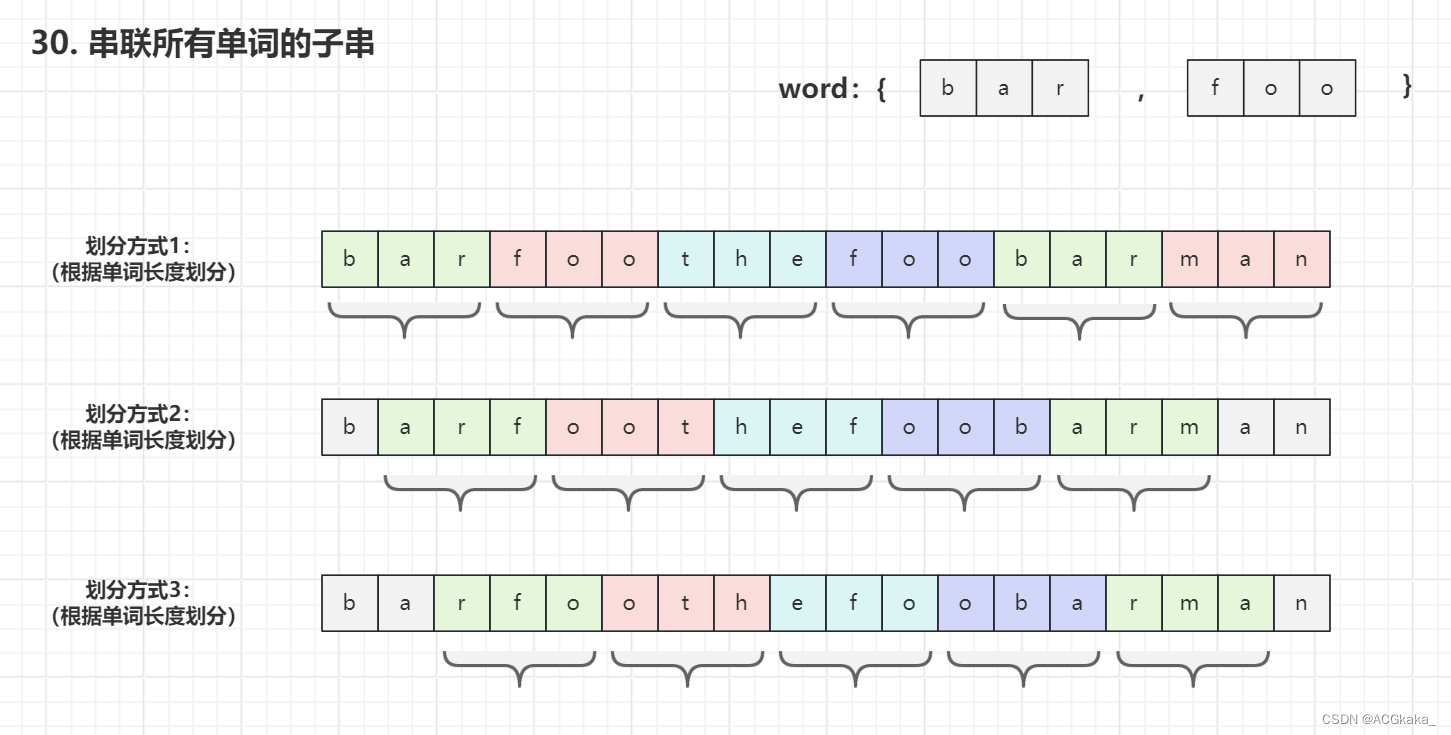
以划分方式1举例,可以将所有单词总长度(单词数 * 单词长度)来作为一个窗口,从左往右滑动。
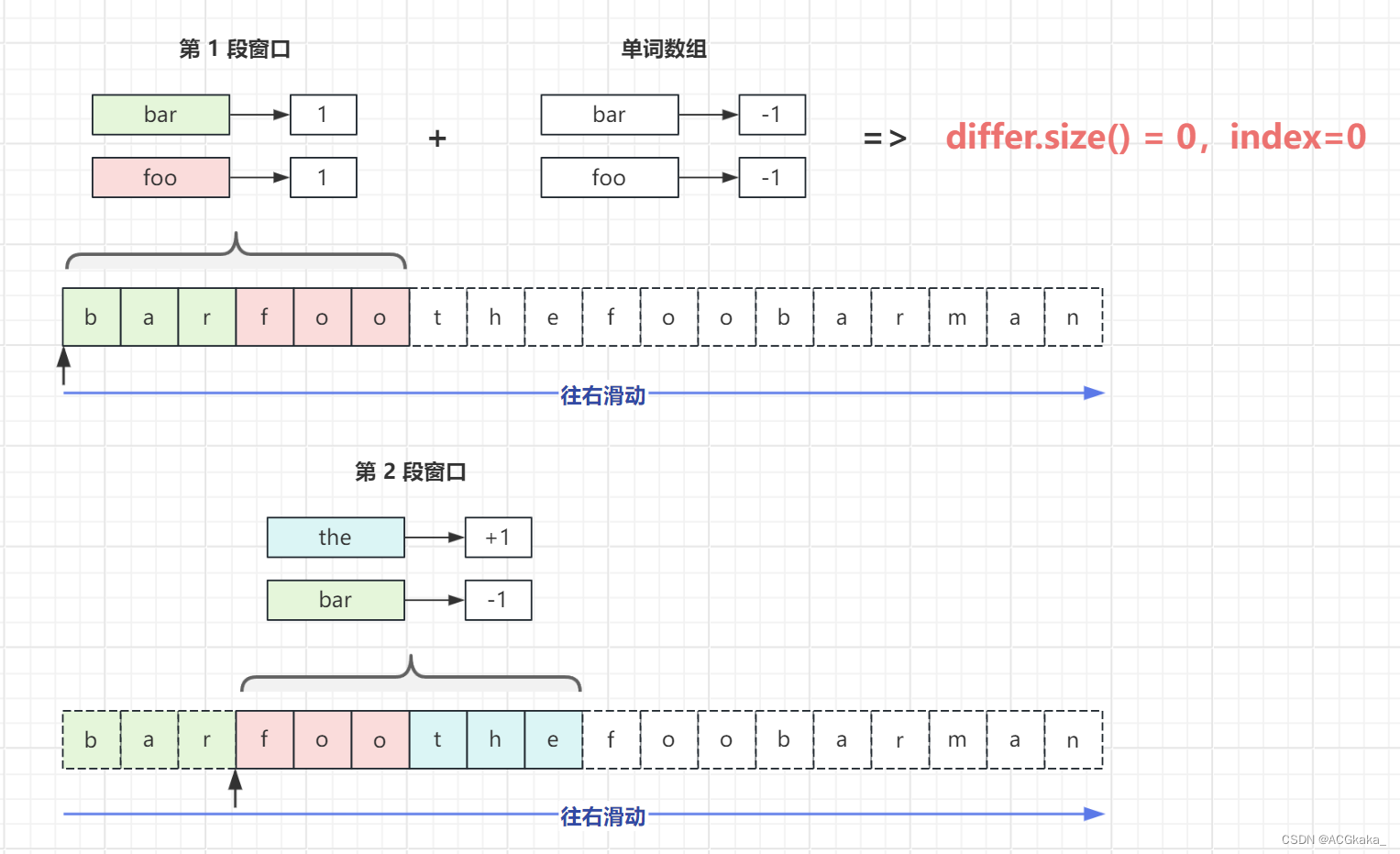
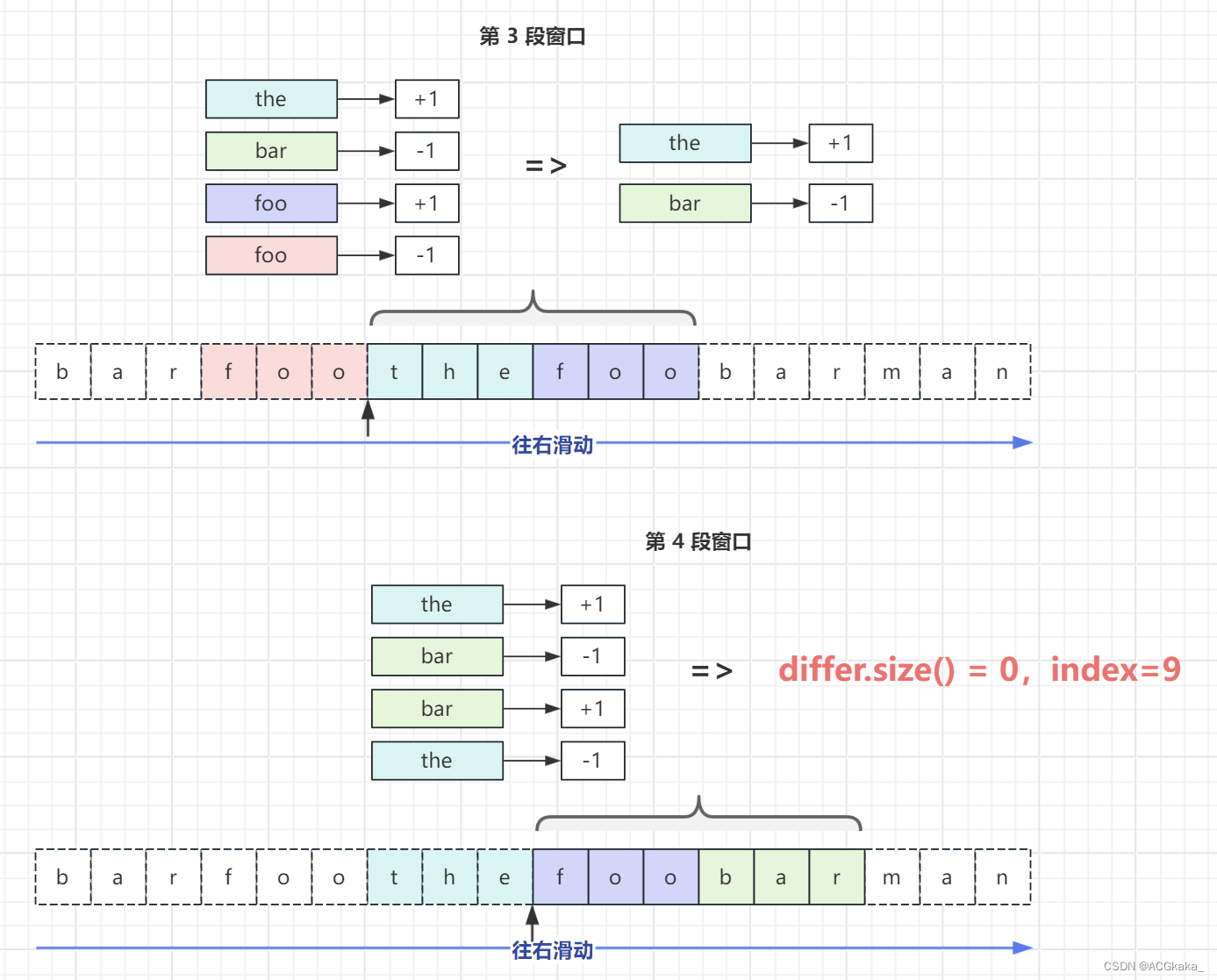
最终得到的 index=0 和 index=9 就是我们的结果了。
整理完毕,完结撒花~ 🌻
